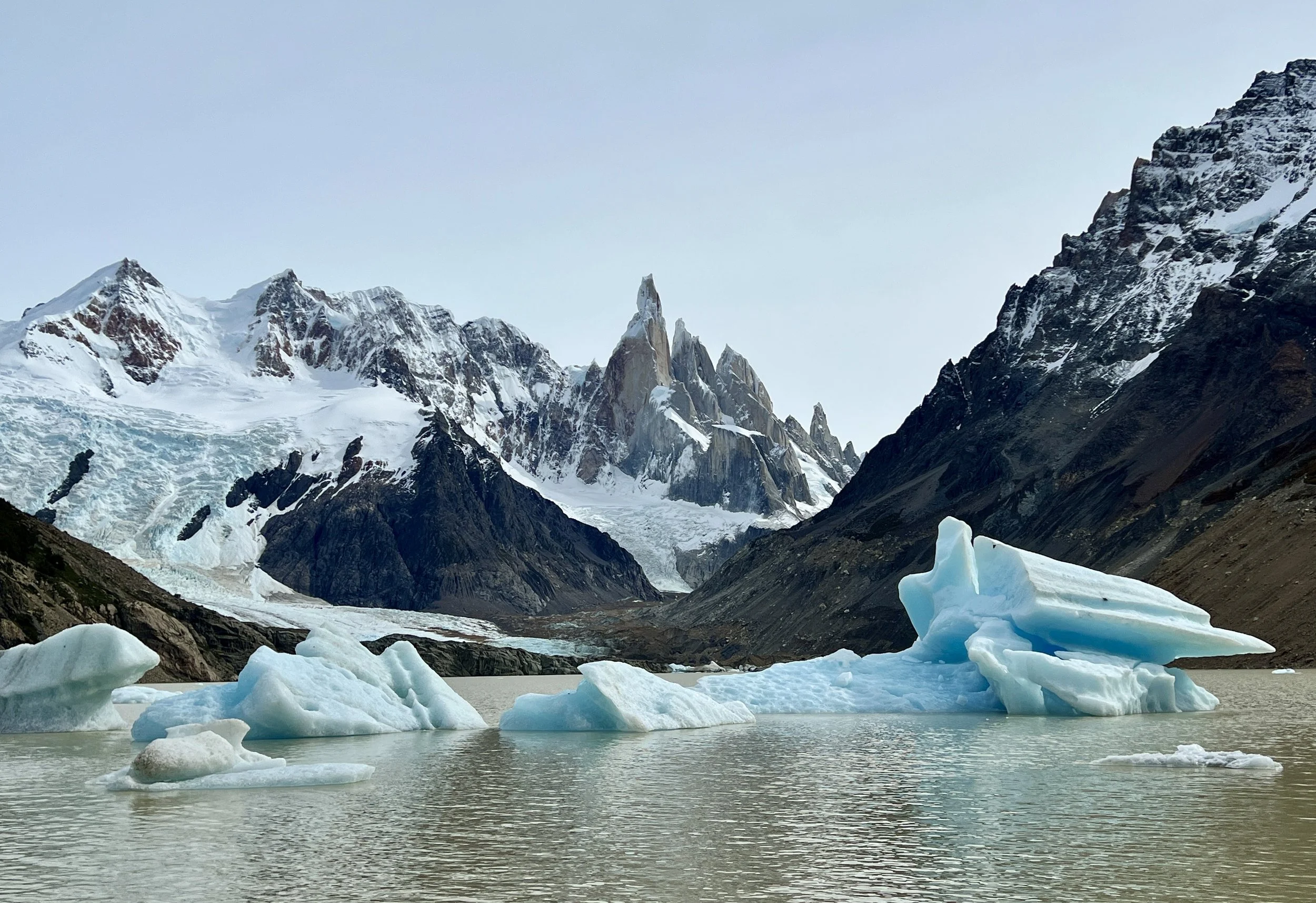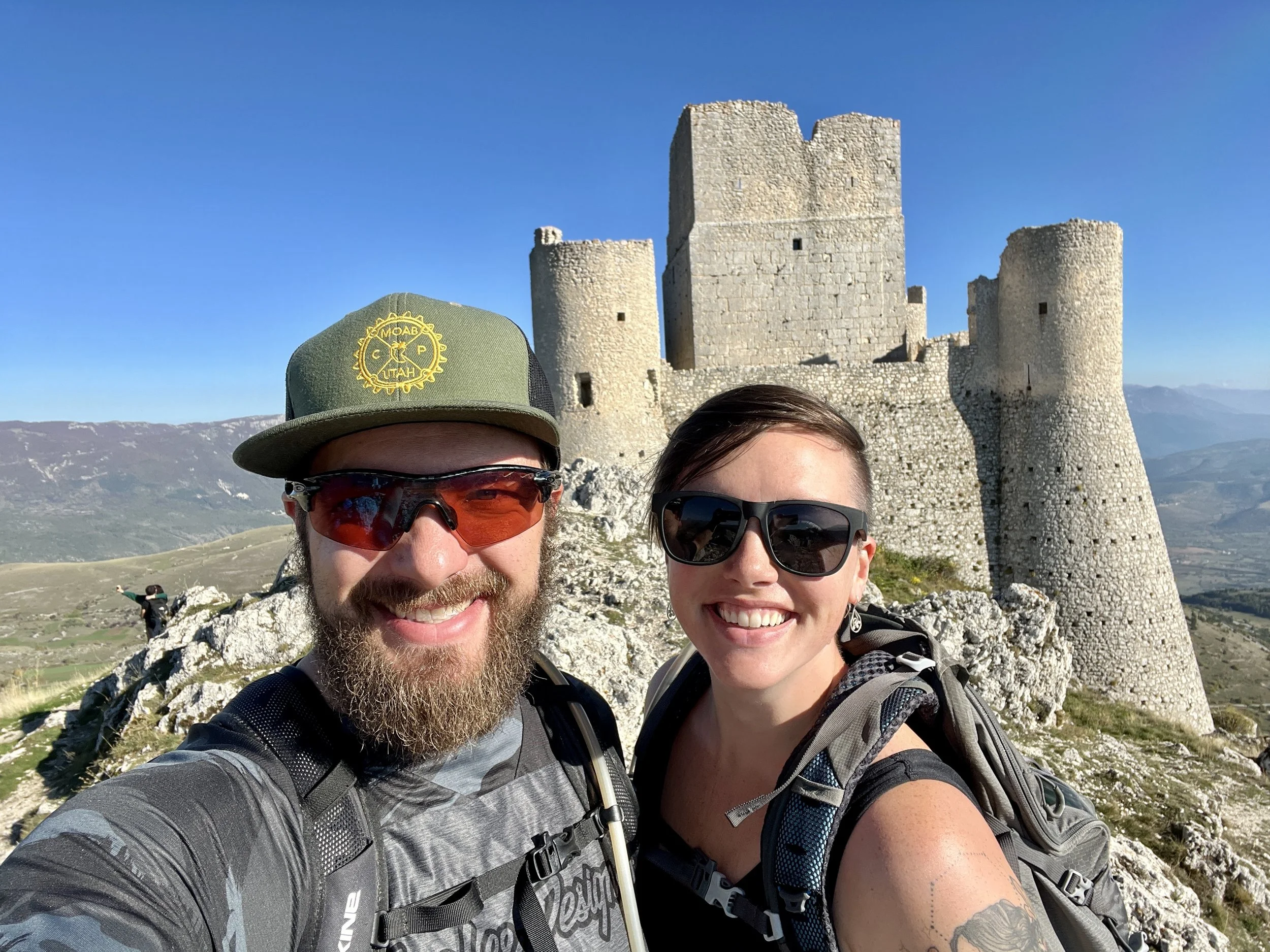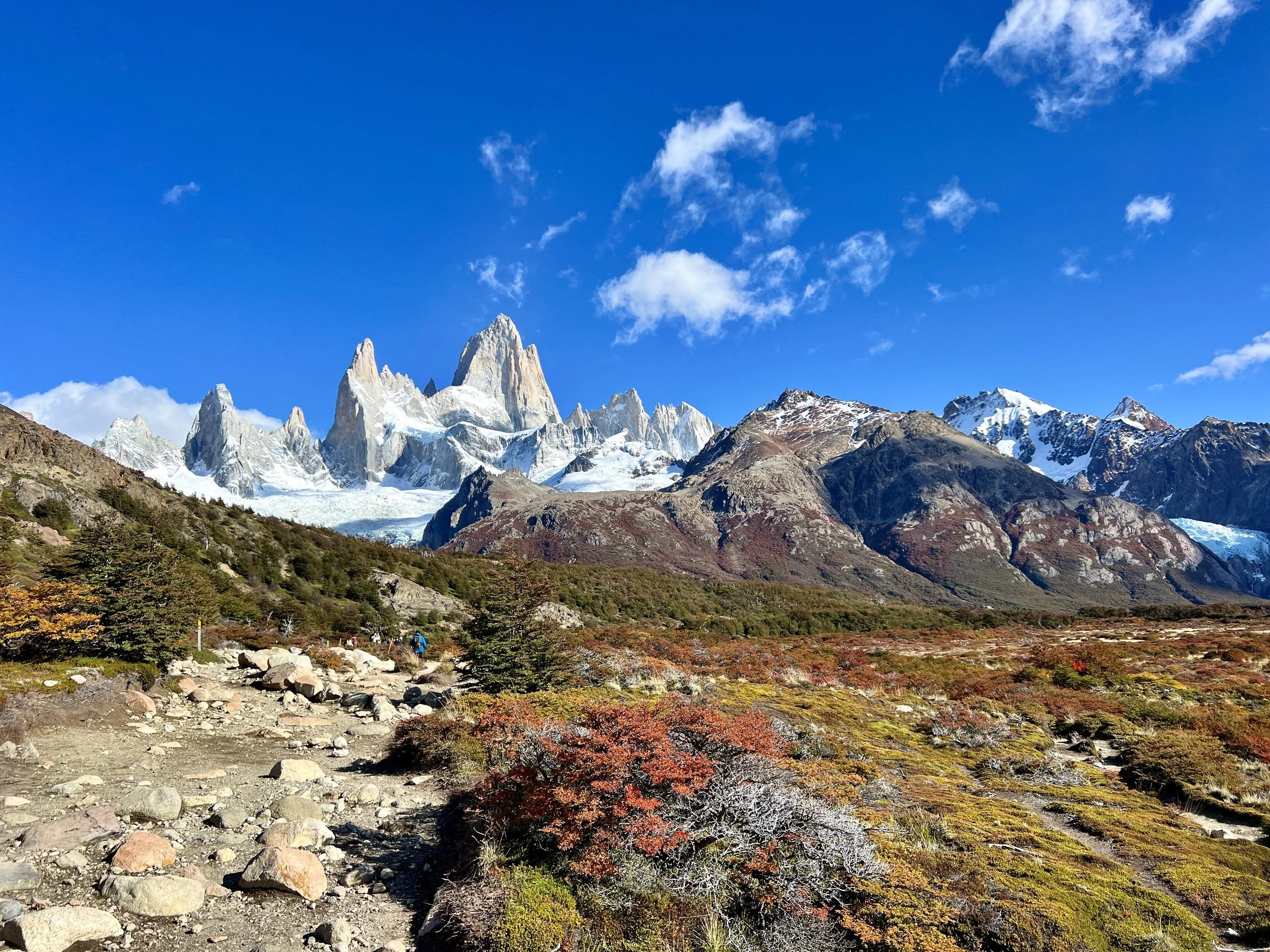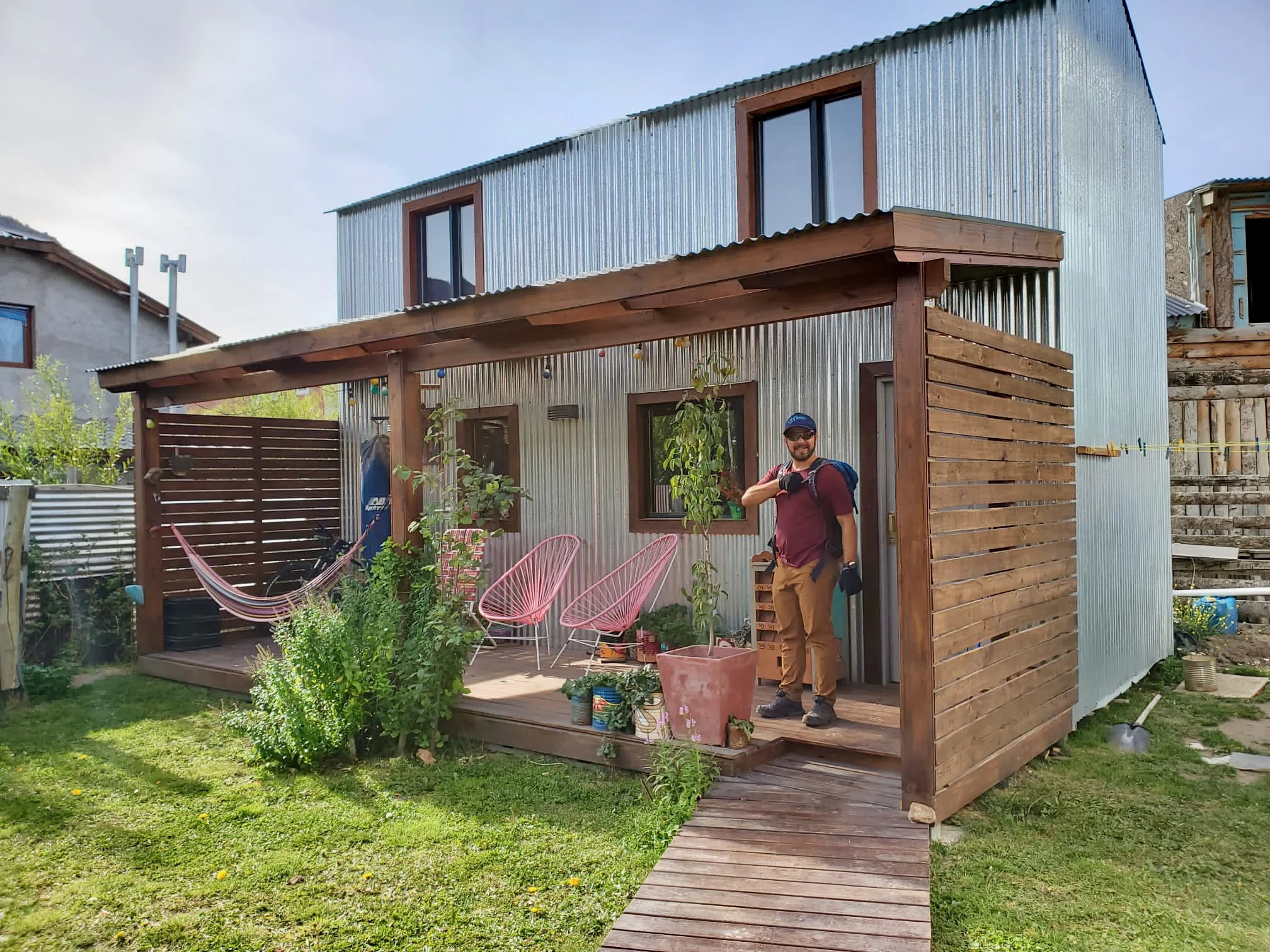How to Score a Free Two-Week International Vacation... Every Single Year
Cerro Torre, Argentina
For many people, international travel is a one-off event they might enjoy once in their lifetime, spending years looking forward to the ultimate getaway. For others, travel is a lifestyle. Instead of spending years dreaming of an international trip without ever turning their dreams into reality, avid travelers always have a trip on the calendar. They are always planning the next big adventure. For these people, one trip just isn't enough.
After writing my first travel hacking guide in 2021, I hoped to see more of my friends and acquaintances taking advantage of these tools and tactics to travel the world, experience new places and new cultures, and enjoy new adventures. While I heard back from a couple of friends who did just that, interestingly, travel hacking doesn't seem much more prevalent now than it was two years ago.
I wondered, "Perhaps a trip to Europe isn't tantalizing enough to get people into this game? Maybe people think a one-off trip isn't worth it? But do they not realize that by using these tactics, they can manage to earn a free two-week international vacation every single year?"
I've been travel hacking for over five years now, and I've managed to earn free trips to far-flung destinations around the world. The most recent was an epic 3-week honeymoon in Argentina—check out these articles for some of the photos!
The truth is, a replicable strategy exists that you can use year after year to earn free travel, drastically subsidizing an adventurous lifestyle. However, the strategy I use year-in and year-out differs slightly from the strategy outlined in my original article (although you should read that one first to learn the basic strategies).
The difference is due to a few restrictions that you need to be aware of as you dive deeper into travel hacking. Most notably? The 5/24 rule.
See Also: “Why You Should Take a Two-Week Vacation”
Working Around the 5/24 Rule
Barcelona, Spain
The 5/24 rule was first created by Chase, which is the bank that backs many of the best travel credit cards in the industry. The #1 card that I recommended in my original article was the Chase Sapphire Preferred, which is widely considered to be one of the best travel credit cards on the market. Chase also backs a bevy of other cards, including many airline credit cards such as the United and Southwest suites of cards.
While the 5/24 rule was never published by Chase, it has been widely verified by travel hackers across the industry. Simply put, the 5-24 rule states that if you've opened 5 (or more) credit cards in the past 24 months, your credit card application will be denied.
While 5 credit cards might sound like a lot, if you follow the strategy I outlined in my original article, you might find yourself opening 3-5 credit cards in the first year, which could put you over the limit. So, to stay under this limit, you can only open about 2 credit cards per year. (More on this below.)
Complicating matters further, I've discovered for myself that additional banks have adopted similar rules about the number of new credit lines opened recently. Specifically, I've been denied for Capital One credit cards several times for this exact reason. As far as I can tell, they've adopted a similar rule to Chase's 5/24 rule. If you take a look at my original article, you'll note that the Capital One Venture Rewards was the second card I recommend opening—so as you can imagine, this could cause problems.
While much has been written about the 5/24 rule that I won't address here, you can work to stay under the rule by pacing out your new credit card applications. But if you've accidentally gone over 5/24 already, you'll have to go through a cooling phase before you can apply for a new credit card with one of these banks. I had to wait quite some time before I finally got my first Capital One card.
Another option is to simply open credit cards from banks that don't adhere to the 5/24 rule, but I've been finding more and more banks are adopting these restrictions. Thus, the strategy below tries to play within this rule.
Scenario Setup
Rocca Calascio, Italy
To outline how this ongoing strategy will work, consider this example scenario. Imagine a middle-class American couple who are both gainfully employed (or jointly have enough income to make this work, regardless of who earns said income). Each of the two people will use this strategy, and they'll pool their resources for their annual international trip. (Don't have a romantic partner? Find a good platonic friend to plan your next trip with—the same strategy applies.)
For easy math, we'll assume that each of the two people in this couple has $36,000 in annual expenses that they can easily run on a credit card, for a total of $72,000 in annual credit card spending.
(Remember, these are expenses that you would already have paid for anyway—things like groceries, gasoline, clothing, dining out, mountain bike gear, medical bills, utility bills, etc. Anything that can be put on a credit card should be charged to a credit card, and your bill must be paid in full every single month. Don't spend this much money? Well then, you're already hacking the system—run what you can on your cards, then skip down to Step 6.)
This couple will then plan one two-week international trip every single year, using their credit card rewards to cover both their flights and their lodging. Each flight will cost about $1,200, and lodging for two weeks will cost about $1,400, for total expenses of $3,800. They will pay $0 for either of these expenses!
Step 1: Earn 2 Credit Card Sign-Up Bonuses Per Year
Monte Fitz Roy, Argentina
This step is the core strategy I outlined in my original travel hacking article, so I won't re-hash all the details here. Instead, I'll highlight the differences.
As noted above, you'll need to limit yourself to only opening two credit cards every 12 months. If you already have some of the cashback cards mentioned below open and available to you, you could get away with opening three cards every other year for a nice extra bump of one additional bonus.
While the aforementioned Chase Sapphire Preferred and Capital One Venture Rewards are both fantastic cards, you'll need to go beyond these two cards. Thankfully, there are tons of cards to choose from, including airline-specific cards and even cards for hotel chains. For more recommendations to help get you a bit further down the line, be sure to sign up for the email list to get the pro-level strategies travel hacking guide.
For the considerations of this strategy, we'll assume that each credit card bonus averages $500 in value. Some cards offer much more than that, and some cards are much less, but let's assume that this is the average you'll be shooting for. (Note: if a card is offering less than $300 in value from your sign-up bonus, that card probably isn't worth your time unless you're acquiring it for the cash back strategy outlined below.)
If each of the members of our couple turns two cards per year, that's $1,000 per person, or $2,000 in value already. With some cards, one single credit card bonus might be enough for a flight... but we'll build an additional buffer with Step 2 below.
Step 2: Cash Back Strategy for Everyday Spending
The average credit card bonus requires $3,000 of spending in the first 3 months from credit card opening. For each of the members of our couple, that means $6,000 of their $36,000 of credit card expenses per year will go toward churning the two new credit cards.
But what about the other $60,000 of expenses?
Even if you're not earning a new credit card bonus, there's still incredible value to be gained from using credit cards for everyday spending. One way many travel hackers gain more points is to continue to use their travel card, like the Chase Sapphire Preferred, for their everyday spending to gain more points and miles miles. While this works well with some travel cards, other travel cards (such as airline cards) generally don't offer great day-to-day rewards. So, to handle everyday spending, I have a couple of cards that I live in my wallet, which I turn to for most of my normal expenses.
First up, the Citi Double Cash card.
The Citi Double Cash Card is simple. There's no annual fee, and you get 1% cash back when you buy and 1% back when you pay off your balance. Since you're paying off your balance every single month, that's an effective 2% cash back on everything you purchase.
There are no special categories and no limitations. Just 2% back on everything.
Consequently, the Double Cash is my default go-to card. I run all recurring bill payments or utility payments through this card. If I don't have a better option, I reach for this card in my wallet. And since there's no annual fee, this is also the oldest credit line that I currently have open.
(Note that there are international transaction fees on this card, so I always use a better travel card for expenses while out of the country.)
Next, I like to pair the Double Cash with a high-quality travel card, which I always keep on hand. Many people prefer the Chase Sapphire Preferred, but I keep the US Bank Altitude Connect on hand at all times. In part, this is because the Altitude Connect provides a whopping 4% cash back on travel, which includes gasoline. It also gives 2% cashback on many categories, like dining and groceries, and 1% on everything else.
Moral of the story: There's no reason to earn less than 2% cash back on a purchase unless you're churning a card for a sign-up bonus.
Most people are walking around with shitty bank credit cards that give them a paltry 1% cash back (or less). Or, *gasp* they might even be using a debit card, which gives 0% cash back and unnecessarily opens them up to be targets of fraud. Making the one choice to get a Double Cash Card will put an extra $720 of free money into this couple's pocket for their next international vacation. (2% of $72,000 vs 1% of $72,000.)
While I'm not willing to accept the complexity of using a different cash back card optimized for every single category of my spending, I do think it makes sense to pick a second card (like the Altitude Connect) that offers a higher cash back rate on a category that you know you spend a lot on. For example, some cards will do 4% or even 5% on groceries. Which card you choose is dependent on which category is largest in your budget.
Finally, remember that you'll also be earning cash back as you churn the two credit cards. This might not add up to quite 2%, but every little bit helps.
While it's impossible to say what the precise cash back percentage rate will be across all credit cards, but if you employ my strategy outlined above, it should be at least 2.5% across $72,000 of spending for this couple, if not more. Therefore, they'll earn an additional $1,800 for their vacation. Add that to our $2,000 for credit card churning, and we've easily met our $3,800 flight and lodging budget.
Step 3: Remain Flexible with Dates and Locations
Mont Blanc Massif, Italy
In order to make a $3,800 budget for airfare and lodging work for a two-week vacation, you must remain flexible with the dates and the destinations you choose. For example, if you want to book a two-week ski vacation in Zermatt, Switzerland, over Christmas vacation, there's no way you'll be able to afford that on a $3,800 budget. However, if you're willing to be flexible with where and when you travel, you can still enjoy all sorts of adventures!
For example, flying to Europe during peak times (and to expensive destinations like Switzerland) can easily approach $2,000 for a round-trip ticket. However, if you choose to fly slightly off-peak (for example, in the fall), you can often get to Europe round-trip for $700 or less. (That's $500 less than I've even budgeted for airfare in the scenario above.)
The same rule applies to destinations on many other continents. I was recently trying to book a trip to Argentina over Christmas vacation, and round-trip tickets started at $1,900. But fly two weeks earlier for the first half of December? They're $1,000 cheaper, at $900 round-trip.
Also, note that some airports and destinations will always be more expensive—like Switzerland. But if you want to explore the rugged beauty of the Alps, try flying into Italy instead and staying on the Italian side at the border—it's just as beautiful, offers arguably better mountain biking, and prices are dramatically lower than on the Swiss side. (France is somewhere in the middle.)
Step 4: Book an Affordable AirBNB and Prepare at Least Two Meals Per Day
AirBNB in El Chalten, Argentina
Staying in AirBNBs is one of my top hacks for affordable travel. While AirBNB is by no means a secret, it's still often dramatically more affordable to book an AirBNB vs. a hotel, especially if you book it for a week or two at a time. (They're often even more affordable if you book for over a month, but that's beyond the scope of this article to discuss fully.) Booking your AirBNB(s) for at least a week (if not longer) is critical to mitigating the costs of the cleaning and booking fees. The longer you book each lodging, the cheaper your per-day rate becomes.
The second reason that AirBNB stays help reduce total travel costs is that it's so much easier to buy, prepare, and store food in an AirBNB than in a hotel room. Many hotels don't even offer a small refrigerator to store your food, much less an entire kitchen to prepare a meal from scratch. Being able to prep your own food is a massive travel hack that drastically reduces costs.
My rule of thumb is to prepare at least two meals per day while traveling. Usually, I eat breakfast at the AirBNB and prep a lunch to take out on the trail or the road. Personally, if I'm going to spend money on dining out, I like to spend on meals that feel like dining experiences. Finding a tiny local restaurant hidden in a back alley that serves stupendous food, where you sit and eat and drink and talk for most of the evening—that's what I'm after, and where I'll allocate most of my discretionary dining out budget. But picking up a quick breakfast or quick lunch while you're on the go to get to the trail or see a tourist site isn't an experience—you're just trying to feed yourself to keep from getting hangry. Unfortunately, those quick stops add up really quickly. So, I do my best to live like a local by buying food at grocery stores and preparing a good percentage of my meals on my own.
Caveat: this strategy does depend a bit on the destination you travel to. For example, dining out in Switzerland is insanely expensive (say, 50-100% more expensive than Colorado, USA). In Argentina, food is about half the cost or one-third the price that I'd expect it to be in Colorado. And in Bali, restaurant food is so absurdly cheap that it doesn't even mentally compute for an American.
Step 5: Focus on Free or Cheap Activities
Bergen, Norway
This has never actually been a "step" that I've consciously taken, but after some consideration, I realized that many other tourists spend vast amounts of money on expensive activities. Personally, I've found many of the most expensive activities I've paid for to be a real bore. Often, you'll end up standing in line waiting for whatever activity it is you've chosen, crowded in with throngs of other tourists who are all doing the exact same thing.
But if you opt for free or cheap activities, often you'll save money and avoid the crowds at the same time.
The ultimate free activity is hiking (or trail running). It literally costs zero dollars, you see incredible views that most other tourists will never experience, you need very little gear to do it, and you can find great trails almost everywhere.
Mountain biking is also a very cheap activity in the grand scheme of things, although you will either have to pay the upfront cost for a bike bag in order to fly your bike or pay the price on the tail to rent a bike in the destination.
My other favorite? Seeing historical sites. While sometimes you'll have to pay entry fees, they're generally not that expensive in the grand scheme of things.
Step 6 (Optional): Create a Savings Account with Automated Deposits for Additional Expenses
Bali, Indonesia
What happens if you decide you want to spend more on dining out, activities, or a more luxurious destination?
In that case, I recommend setting aside additional savings to budget for your trip. In order to keep those savings from being eaten up by your normal day-to-day expenses, follow these tips:
Create a dedicated high-yield savings account just for travel.
By creating a dedicated high-yield savings account that is earmarked exclusively for travel, you won't be tempted to dip into it for other expenses. Additionally, high-yield savings accounts are currently a decent place to park your assets, with many yielding 5% at the time of this writing.
2. Create an automated monthly deposit into this account.
By choosing to automate the deposit directly into the savings account every month, you only have to make one decision to save, and then it will happen automatically every month—forever. You will also find that you don't miss the money, as it's removed from your checking account shortly after your paycheck is deposited. You'll find that you quickly adapt to living without this money, and instead, it will slowly accumulate in the background for your next big trip. (Note: this is the exact same strategy you should be using for your monthly investments.)
To start, pick a number that feels comfortable—$100 is a nice even number to begin with, and you probably won't miss it that much on a monthly basis. Even so, $100 a month adds up to $1,200 per year ($2,400 for our couple example), which is a radical increase to our planned budget—from $3,800 to $5,200!
Parting Thoughts
As I've outlined above, financial concerns aren't a viable reason to put off taking that epic international trip (for a middle-class American couple). Whether you want to trek in the Andes, mountain bike in the Alps, surf in Indonesia, or go on any one of a million other adventures, basic travel hacking strategies can help you take goals off of your "someday" bucket list and instead put them on your calendar for a concrete time in the future.
Knowledge is power, and with the knowledge of how to use credit card rewards and other key travel strategies to your advantage, you can create the life of your dreams by taking your dreams and turning them into reality—right here and right now.
DISCLAIMER
This article is for informational purposes only. Any financial tools mentioned in this article are not recommendations but rather examples of options available to you. Do your research before opening one of these financial tools. Gregory Heil and Singletrack Media, LLC, cannot be held liable for any actions taken as a result of this article.










